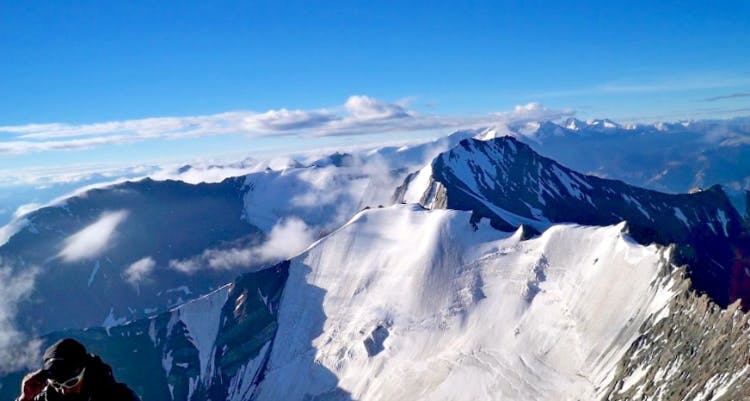A couple of months ago, I was on an alpine climbing expedition Lahaul, and was climbing with a Mountain Guide who is president of the Romanian Alpine Club. {European mountain guides are considered the best in the world, and spend between 5 and 8 years training before they can call themselves mountain guides.}
Talking about mountaineering, Cosmin said, “You know, I go to a party, and whenever I say I’m a mountaineer, people are automatically interested in my life, and begin to ask me questions. One of the first is ‘Have you climbed Mt. Everest?’ When I say I haven’t, they’re immediately bored and stop talking to me!” Welcome to the world of Alpine Climbers.
So, before you do anything, decide what kind of mountaineer you want to be.
The Expeditionist | Expedition style climbing is very popular in the Himalayas. This style of climbing involves large teams, accompanied by guides, porters and high altitude porters. Ropes are often ‘fixed’, meaning climbers need to just attach themselves to these ropes and pull upwards. It isn’t as easy as it seems, though. Mt. Everest is climbed most often in this style, as are the other 8000 mt peaks.
The Alpinist | Alpine Climbing is a style of mountaineering that evolved in the Alps {hence the no-brainer name}. This style focuses on ‘Purity’, meaning that climbers are not accompanied by Sherpas or porters. Alpinists carry all of their own gear, and their mantra is “Go Fast, Go Light.” Internationally speaking, this is where all the action in the mountaineering world is. All the big mountains have been climbed, and nobody climbs for national glory or exploration any more. So, Alpinists aim to affect fragile mountain environments as little as possible, and spend as little time on the mountain as possible. Alpinism is a lifestyle choice, and it’s common for alpinists to break their toothbrushes in half to save weight!
The Rock Climber | Rock climbing evolved as a part of mountaineering, but has now developed into its own sport, with its own sub-sports {sport climbing, big wall, bouldering etc). Rock climbers almost never need to step into the high mountains, and instead concentrate on ‘sending’ {climberism for “ascending”} the hardest routes they can.

